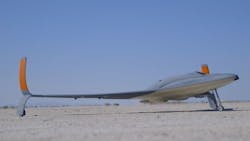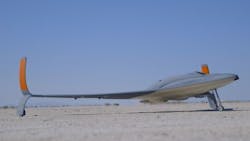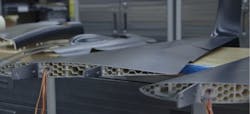Aurora Flight Sciences, Stratasys develop jet-powered UAV using 3D printing
3D printing and additive manufacturing solutions provider Stratasys (Minneapolis, MN) has teamed with Aurora Flight Sciences (Cambridge, MA) to deliver what is believed to be the largest, fastest, and most complex 3D-printed unmanned aerial vehicle (UAV) ever produced. Unveiled for the first time at the Dubai Airshow (November 8-12, 2015; Stand 206), the high-speed aircraft is built using lightweight Stratasys materials to achieve speeds in excess of 150mph.
To realize the joint goal to design and develop an advanced 3D-printed demonstration aircraft, the final UAV—which has a 9ft wingspan and weighs only 33lb—leveraged 3D printing for 80% of its design and manufacture and is built on the expertise of Aurora Flight Sciences’ aerospace and Stratasys’ additive manufacturing.
“Stratasys 3D printing technology easily supports rapid design iterations that led to a dramatically shortened timeline from the initial concept to the first successful flight,” says Dan Campbell, Aerospace Research Engineer at Aurora Flight Sciences. “Overall, the technology saw us cut the design and build time of the aircraft by 50 percent.”
For Aurora, Stratasys’ additive manufacturing solutions provided the design-optimization to produce a stiff, lightweight structure without the common restrictions of traditional manufacturing methods. This also enabled the cost-effective development of a customized—or mission-specific vehicle—without the cost constraints of low-volume production.
“In addition to leveraging FDM materials for all large and structural elements, we utilized the diverse production capability of Stratasys Direct Manufacturing to produce components better suited to other technologies. We elected to laser sinter the nylon fuel tank, and our thrust vectoring exhaust nozzle was 3D-printed in metal to withstand the extreme heat at the engine nozzle,” explains Scott Sevcik, Aerospace & Defense Senior Business Development Manager, Vertical Solutions at Stratasys.
For more information, please visit www.stratasys.com/industries/aerospace/fdm-uav.



